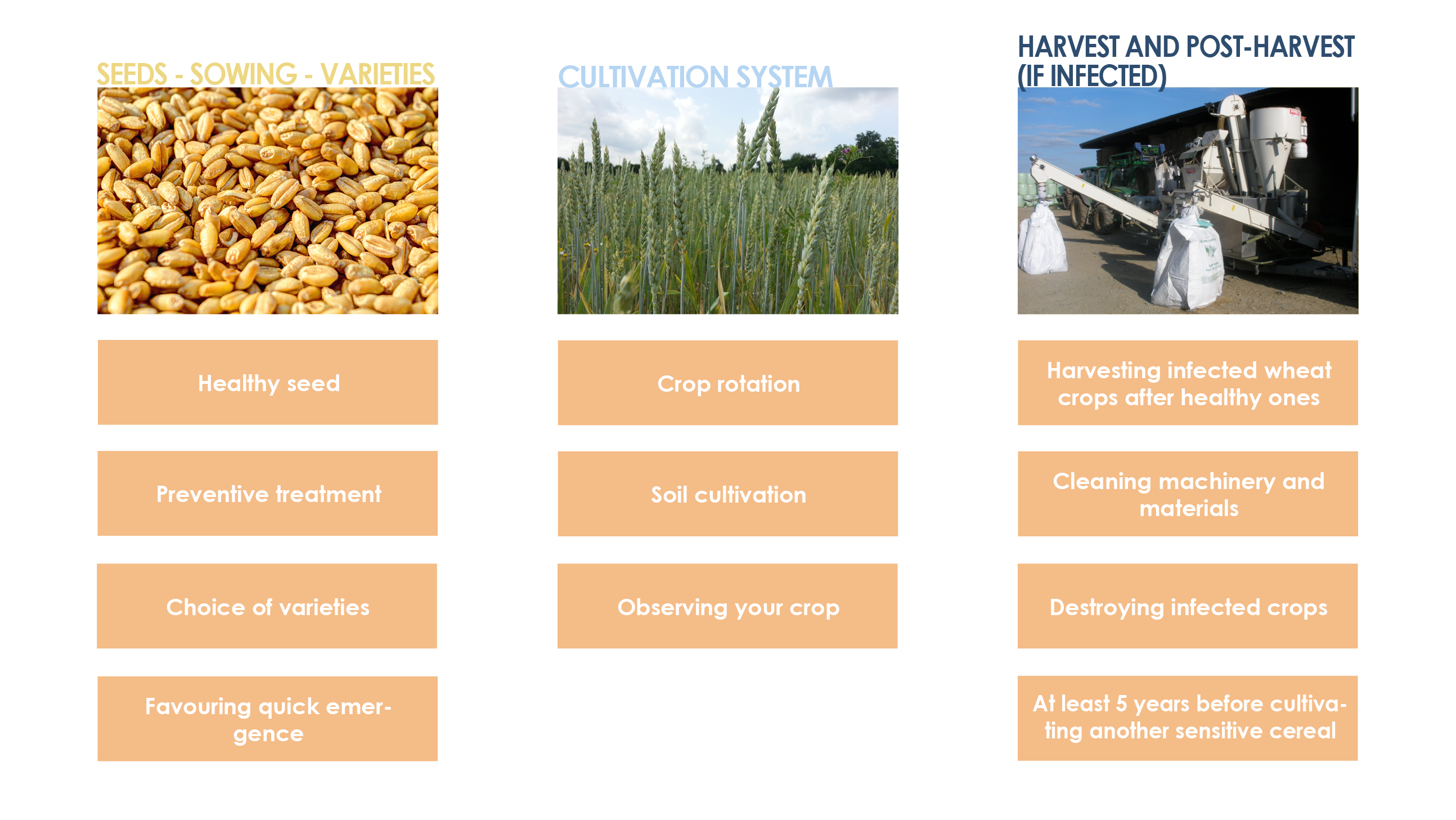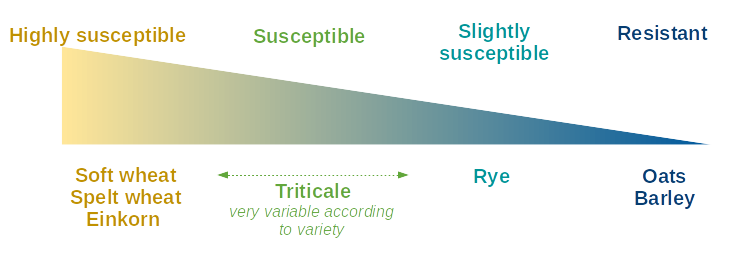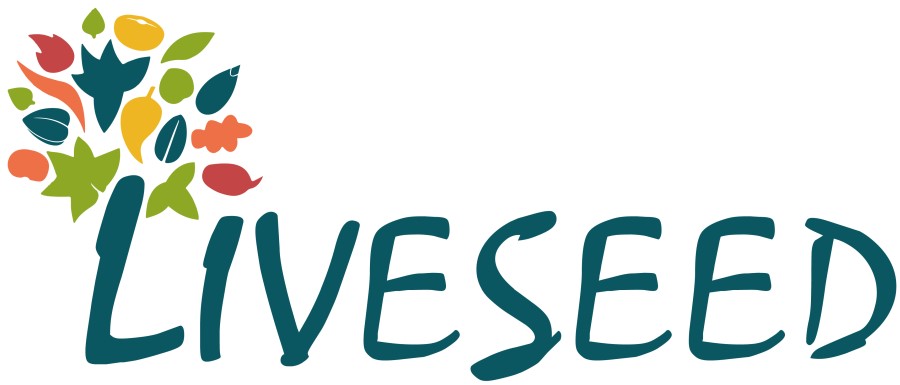|
LEVERS OF BUNT MANAGEMENT In organic farming systems, prevention and observation are essential to grow healthy crops. A diversified rotation is the basis for preventing plant diseases. By observing your crops at regular intervals, you can anticipate certain problems or at least act in time to limit the damage. The diagram below summarizes the management levers that can be used in organic farming. To learn more about a particular management lever, click on the respective box within the scheme (or scroll down):  Healthy seeds As seed is the main vector of bunt infection, it is essential to ensure the use of healthy seeds. For untreated certified seed, the legal contamination threshold depends on national regulations. For farm-saved seeds, we recommend to : ·Observe your plots carefully at the time of heading in order to intervene quickly in the event of a bunt infection ·Have your seeds analysed by a laboratory to detect the presence of bunt ·Treat your seeds annually or according to the analysis of the respective seed batch · Procure healthy seed (certified seed or tested farm seed) when the health situation becomes too difficult to manage. The latter option is not easily applicable in the case of farmers' varieties*, when the objective is to maintain a locally adapted wheat population. *Farmers' varieties :These are population varieties selected, propagated and produced on the farm. Managed individually or collectively, they are a means of moving towards greater autonomy and seed sovereignty. The objective is generally to multiply a population within a farm or region to allow it to gradually adapt to local conditions. The onset of a bunt infection can be particularly problematic in this context, as it may force the farmer to start again from seed that has not co-evolved with his or her farm and to start the selection and adaptation work from scratch. Preventive seed treatments See the page Seed treatments Choosing the crop species and variety : As shown in the diagram below, the degree of susceptibility of cereals to common bunt varies according to crop species, with soft wheat being among the most susceptible. Only oats and barley are considered resistant. Bunt has been observed very rarely on rye, under experimental conditions. Somewhere in-between wheat and rye, triticale can be more or less susceptible according to variety.  To date, there is no wheat variety that is completely resistant to common bunt. However, the level of susceptibility is known for some varieties such as:  Favour a quick emergence The fungus causing common bunt is able to penetrate a wheat seedling in a well-defined time window between germination and the 3-leaf stage (see section: "what is common bunt?"). It will then thrive and grow within plant tissues. Fostering rapid emergence and development of seedlings therefore reduces the potential for the fungus to infect plants and spread. Sowing under conditions as favourable as possible to germination and emergence of the crop reduces the risk of infection with common bunt. However, it is not easy to predict exactly what will promote rapid emergence from place to another place and year one year to the next. Some farmers practice early and/or shallow sowing. Crop rotation A diversified rotation is a basic principle for the prevention of plant diseases in organic agriculture. The closer the susceptible cereal crops follow each other in the rotation, the higher the risk of common bunt. Soil cultivation Bunt spores need oxygen and water to germinate. Compacted soils therefore hinder their germination. When the soil of a plot is contaminated, deep tillage in the first year of infection buries the spores, making it difficult for seedlings to become infected the following year. However, another deep ploughing will bring the spores back to the surface. Also, buried spores, which do not find the oxygen necessary for germination, are preserved. The inoculum present in the soil therefore does not degrade. In tillage systems, it is recommended to wait five ploughings before growing another susceptible cereal crop on an infected plot. Spore biology and survival in no-till systems has not yet been studied sufficiently. We therefore advise to wait 5 years in no-till systems. Observing the crop Regular observation of the crop allows early detection of bunt in order to take measures to limit damage, for example by eliminating plants presenting symptoms (in small fields). The symptoms visible in the field are described in the "symptoms and detection" section. Observation is particularly important in the case of seed production. Harvest infected fields after healthy ones If you do decide to harvest an infected cereal crop, harvest plots where bunt symptoms have been observed after the healthy plots, to avoid any cross-contamination. Remember to clean harvesting equipment by harvesting a resistant crop before going into another susceptible crop or sharing it with your neighbor! Cleaning harvesting equipment Bunt spores can be transmitted by harvesting equipment. A Danish study (Kristensen & Borgen, 2001) concluded that after harvesting a contaminated field, a combine harvester must be filled and emptied 4 times with healthy seed to achieve an acceptable contamination rate. When a harvester has been used for a crop with bunt, or when the last harvested field (shared equipment, contractor) is unknown, it is best to first harvest crops for grain production, and fields for seed production at the end. Care must also be taken to ensure that any other equipment used during harvesting and for post-harvest is clean: silos, big-bags, cleaning equipment, etc. Destroying the harvest When bunt-infected wheat is harvested, the smell of rotten fish can make the batch unfit for consumption, and it is then rejected by the mill and for animal feed. Destroying it avoids preserving or even spreading a source of inoculum on the farm. At least 5 years before growing another susceptible cereal When bunt has occurred in a plot, the soil can be considered as being infected. The survival of spores in the soil is highly dependent on soil conditions. Survival of more than 10 years has been observed in experimental conditions (Johnson, 1990), but generally it is sufficient to wait 5 years to reseed a cereal that is susceptible in the respective field (see "Soil cultivation" above for detail). Bunt Control video - By LIVESEED (Manage common bunt) |

